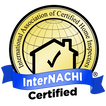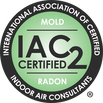Mike's Home Inspector BlogMichael Burfitt |
|
One of the most interesting aspects of a home inspection is going into the attic space. This is an area where few homeowners venture and provides plenty of valuable information as to the condition of the home. One such important detail is ventilation. Do unfinished attics where nobody spends any time in really need ventilation? Yes!
There are several reasons why poor ventilation needs to be corrected:
While it is important for a roof to have adequate ventilation, it should also be noted that too much ventilation can introduce too much moisture and can also lead to premature roof failure. A roofing contractor can offer recommendations to the appropriate level of ventilation. Fortunately, attic spaces generally don’t need a lot of regular maintenance, but they should be checked at least a couple of times a year. One of the biggest issues I see are rafter baffles that have been knocked out of place by high winds. They are pictured in the diagram below and keep the soffit vent free of insulation. How do you know if you have ventilation problems? Of course, you can always contact your friendly neighbourhood home inspector at Inside Edge Home Inspections for help but here are a few clues that it may be time for further investigation.
There are many types of attic ventilation, but the most common type is a combination of soffit and ridge (roof peak) vents and has been very popular since the 1980s. There are other options that a roofing contractor can discuss should you have any concerns about inadequate insulation. One of the questions frequently posed to home inspectors is if a home can fail an inspection and if so, how often do homes fail? The simple answer to that is no: we are independent consultants, not municipal code compliance officers and do not condemn homes. Every client has different expectations and what their tipping point is and will have to make that decision for themselves and as home inspectors we provide the necessary knowledge and facts. Yes, there are a number of issues that are very serious and difficult if not impossible to remedy at a reasonable cost but luckily, they are rare in my experience. One of the ways I accomplish my goal of providing detailed information and organize my reports in a way that is easy to understand is to provide an action list at the end of each report. I then organize tasks based on what I consider the priority level: every inspector is different, but I personally break down my recommendations into four basic categories: In reality, while these specific examples look easy to categorize in many cases a great deal of judgement is used in making proper recommendations. One such example is a cracked foundation: a crack can be a sign of anything from a cosmetic nuisance right up to a symptom of complete structural failure. Luckily the overwhelming majority of cracks are minor but as a home inspector we can advise whether the services of a structural engineer or other specialist should be sought.
As a volunteer first responder, possibly the most important skill other than immediate life-saving actions is to not only report and observe but also to understand when an issue needs further attention and if so, what form it should take: many issues look serious on the surface but are relatively minor while others are only serious to the trained eye and need immediate attention. Developing this skill has served me well as a home inspector too, where I am able to put issues in the proper context, not overreacting or underreacting to what I see. Home inspector's reports do not have a grade and there is no such thing as pass or fail but there are issues with various degrees of seriousness in each and every home. This is why I promote and recommend regular maintenance inspections: we can help you avoid surprises and to plan and budget for preventative maintenance on your terms. According to the InterNACHI Standards of Practice, there are a number of items all members must inspect to meet the minimum requirements. The one category that has by far the most items to inspect is electrical. There are couple of main reasons for this: the first is that electrical work can be expensive (it is mandatory to be licensed in Nova Scotia for a very good reason!) and many of the issues are hidden and can be very dangerous, even fatal. Today I am going to talk about something that any homeowner can do on their own to check their electrical system. 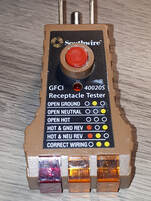 Nearly everyone in North America knows what these are and every home has dozens of these duplex receptacles. As can be seen in the diagram above, the short slot is for the hot (or energized) pin, the left is for the neutral pin that connects to the wire that completes the circuit back to the grid and the semi-circular slot is for a ground (or emergency path) pin. These outlets can also be installed with the ground on top and while this isn't common in residential properties it is both acceptable and safe. The tester pictured here can be bought at any home improvement store for an affordable price and used by any home owner or tenant to gather quick diagnostic information. While they are not perfect, they can help identify some significant electrical issues. Let us run down all the various fault codes on this particular tester and what they mean: Open Ground This is the most common condition I see and it may either be a systematic or localized problem. What this means is that the detector does not sense a emergency path in the case of an electrical fault. Grounding has been required in both Canada and the United States since the 60s and is especially important in objects made of metal as they conduct electricity. Without a ground wire, the electrical path may use your body as a way to get back to source and this could lead to anything from a nasty shock right up to cardiac arrest. There are a number of reasons for this, which can range from a simple slipped wire to a complete lack of grounding protection in the home that requires a complete and expensive home rewiring to correct. Open Neutral This means there is a disconnect detected on the neutral wire. Simply put, in most cases two things will happen: the device plugged in won't work since there is no return circuit and you may receive a nasty shock as the outlet is still energized. This is a dangerous situation that needs immediate correction by an electrician. Open Hot This is a case where there is no hot wire connected to the outlet. This is very easy to spot as the outlet will not work as there is no energy source. This is the reason why none of the three lights will come on during an open hot situation. Hot & Ground Reversed This is a rare situation that is extremely dangerous and would be the result of someone who had no idea how to wire an electrical outlet. Like most inspectors I have never seen it and likely never will. This indicator can also be a false positive and could actually mean an open neutral, which while also serious is not nearly as expensive to correct. Hot & Neutral Reversed This is the second most common issue I see after open grounds and can also be known as reversed polarity. This means that the outlet is wired in reverse, where the energy is flowing in the opposite direction from what is intended. This can go undetected for years, even decades as many items (particularly electronics) are not polarized and it doesn't really matter to them which way the current flows. Other items that are polarized, such as light sockets or appliances will be energized even when off and will deliver a nasty, potentially fatal shock if you touch the wrong spot. These testers are not 100% reliable. For example, a tester cannot detect a dangerous condition known as a bootleg ground, where the ground wire is illegally hooked into the neutral wire. This essentially means that the GFCI protection needed in wet areas is removed and the entire casing can become energized. This is one reason why if it is safe to do so I attempt to take off every electrical panel cover I see to inspect for proper wiring and grounding: if the panel isn't grounded (mostly due to age) and the outlet tester says it is, this can be a symptom of a very serious problem. Another way to put this is that a tester is just one of many tools a home inspector uses to perform their duties. It is important to note that all electrical work in Nova Scotia is required to be done by a licensed electrician. These testers are a great diagnostic tool but unless you know what you are doing, contact an electrician to correct any issues in a home. While their services can be pricey, it is not worth losing your life or burning your home down to save a few hundred dollars. If you ever do research on how to become a home inspector or what makes a great home inspector, you will find lots of information on the benefits of having things like a construction, engineering or trades background or a strong eye for detail. One thing that rarely is discussed is the importance of communication: not only to explain potential issues we find but to put them into the proper context using our skills and knowledge. Here are some examples of statements that are 100% true, yet are very misleading:
Electric Heating is 100% Efficient No high efficiency furnace or boiler can compete with electric heat, but this ignores the simple fact that electricity is usually produced by generators which are about 30% efficient. Overall, electric heating is the most inefficient and expensive way to heat a home. Electrical Heating is the Most Inefficient and Expensive Way to Heat a Home Again, this is correct on the surface but is misleading. There are a few advantages of electric heat: no oil or propane tanks are needed, they are easy and inexpensive to install, and they can be relatively easily added to cold areas of a home. They are also great for distant areas where heat is only needed sparingly, such as in a garage or workshop. In short, all heating sources have advantages and disadvantages and that is why there are so many different examples seen in homes. Radon is a Radioactive, Tasteless, Odourless Gas That is Everywhere and There is No Safe Limit You can also substitute "Carbon Monoxide” and this statement would again be true but misleading. Every single home has radon and while there is no agreed safe limit the Canadian guideline is 200 becquerels per cubic metre (200 Bq/m3) and no action is recommended unless the long-term levels in your home exceed this. I have discussed this in depth in a previous blog post, but the bottom line is radon can indeed be dangerous but, in many cases, it is not a concern. Inside Edge Home Inspections Ltd. Uses an Unlicensed Home Inspector Sounds shocking that I would admit this is true until you learn that in Canada ALL inspectors outside of British Columbia and Alberta are unlicensed: a license not only is not required but does not exist. Furthermore, as of 2021, there are absolutely no requirements to anyone calling themselves a home inspector in any of the Atlantic Provinces. Our website demonstrates my impressive credentials and extensive experience, including completing 340 hours and counting of continuing education just in 2021 alone. If licensing becomes available our company will be first in line to sign up and I run our company to the point getting a license would be very easy if available. The reality is we are fully incorporated in Nova Scotia, our company is a certified member of InterNACHI, the world’s largest home inspection organization, and I am a Certified Professional Inspector with InterNACHI. Our passion is providing quality, independent home inspections and we fully support all efforts to raise the standards in our industry. |
Archives
July 2024
Categories
All
|
|
Inside Edge Home Inspections Ltd.
Halifax, NS 902-209-9921 [email protected] Proudly Serving the HRM & Central Nova Scotia |
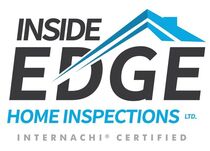
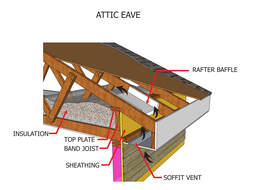

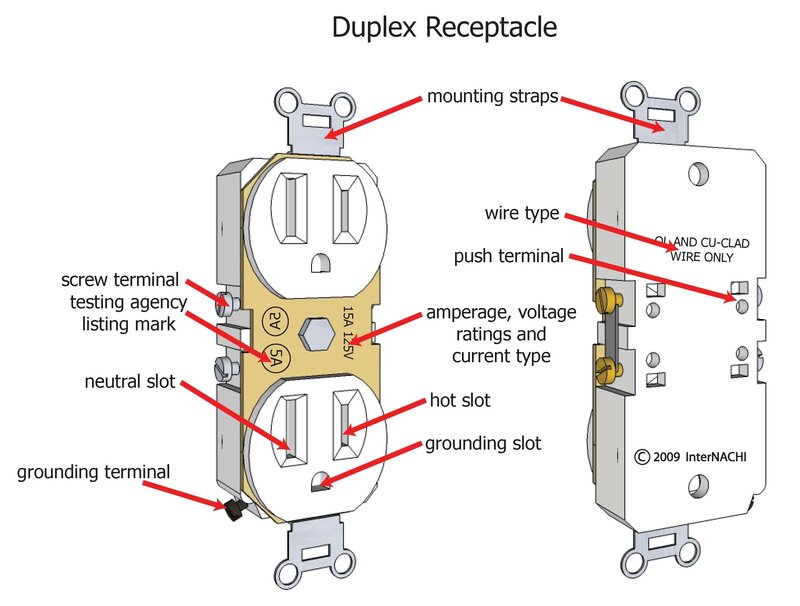

 RSS Feed
RSS Feed
